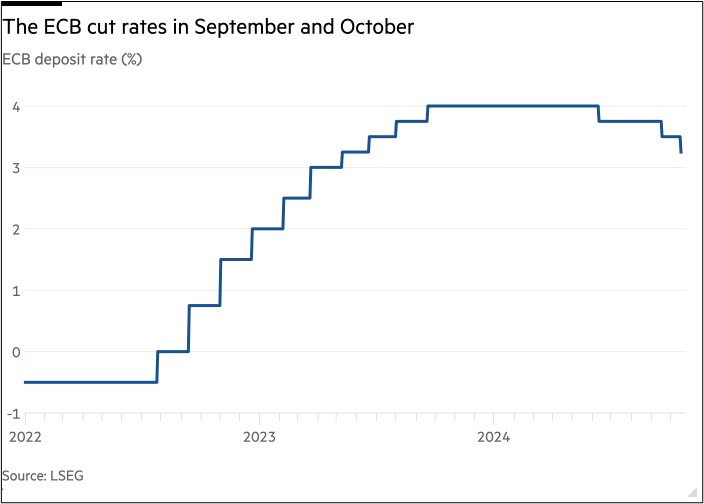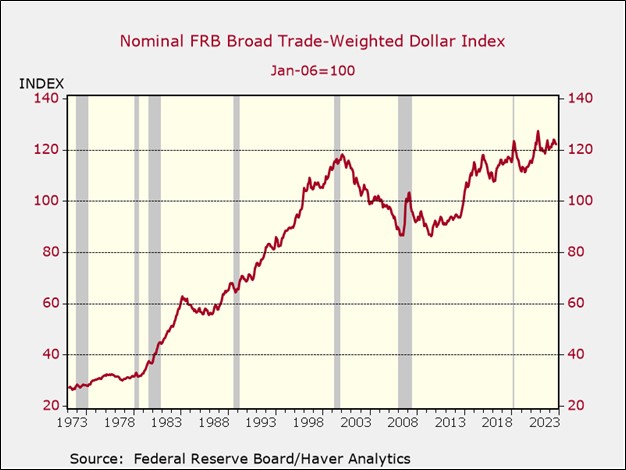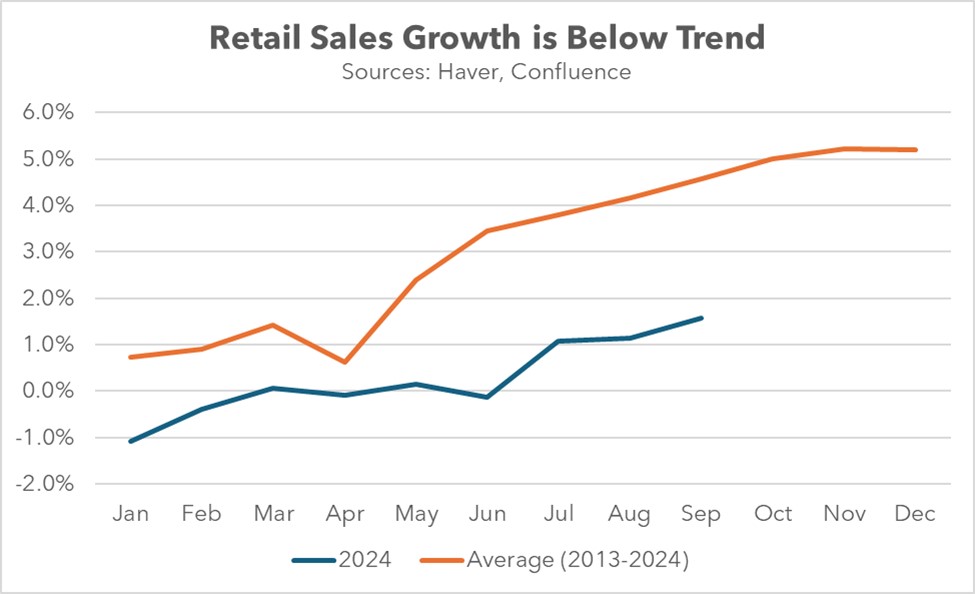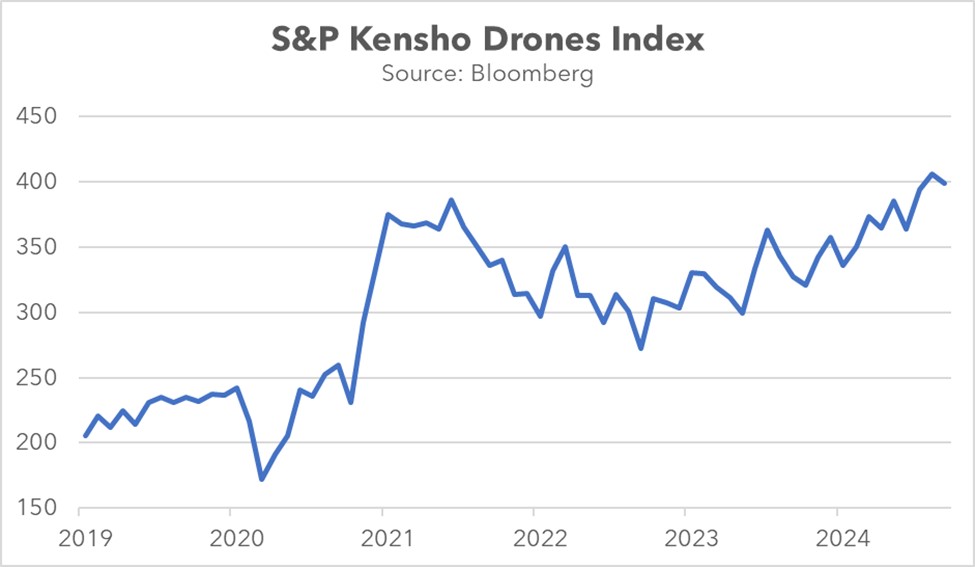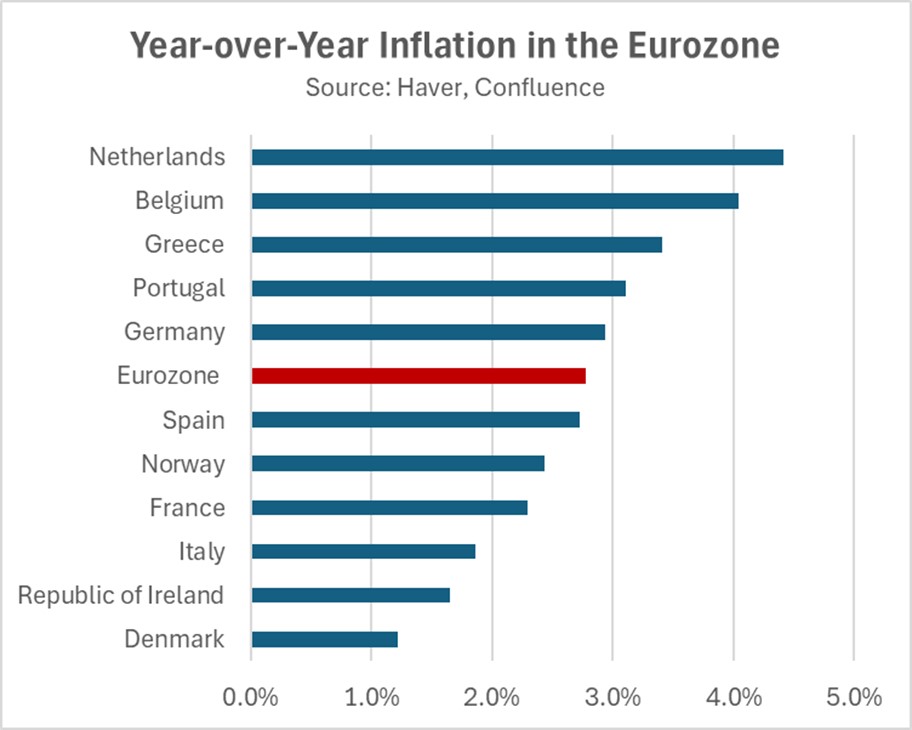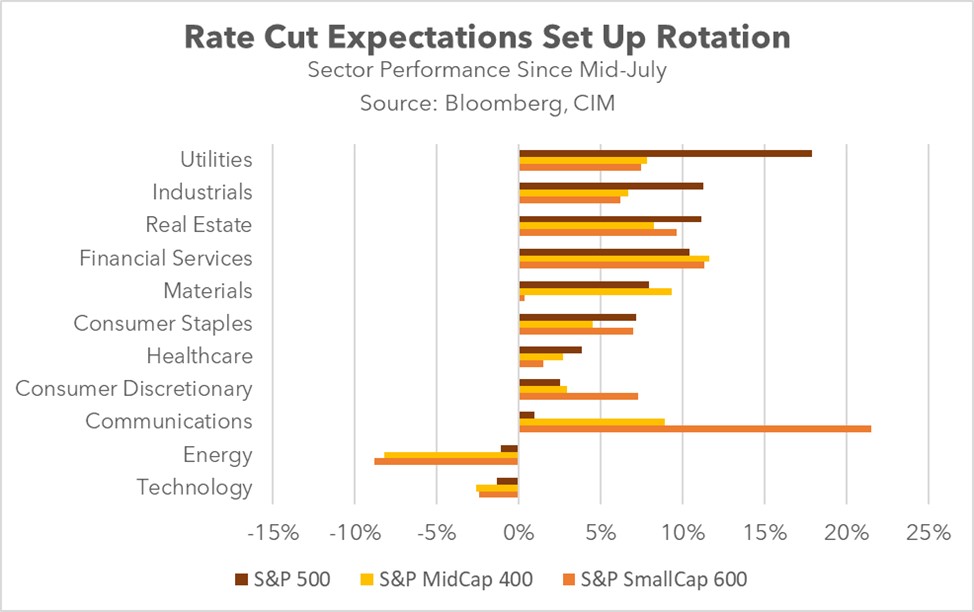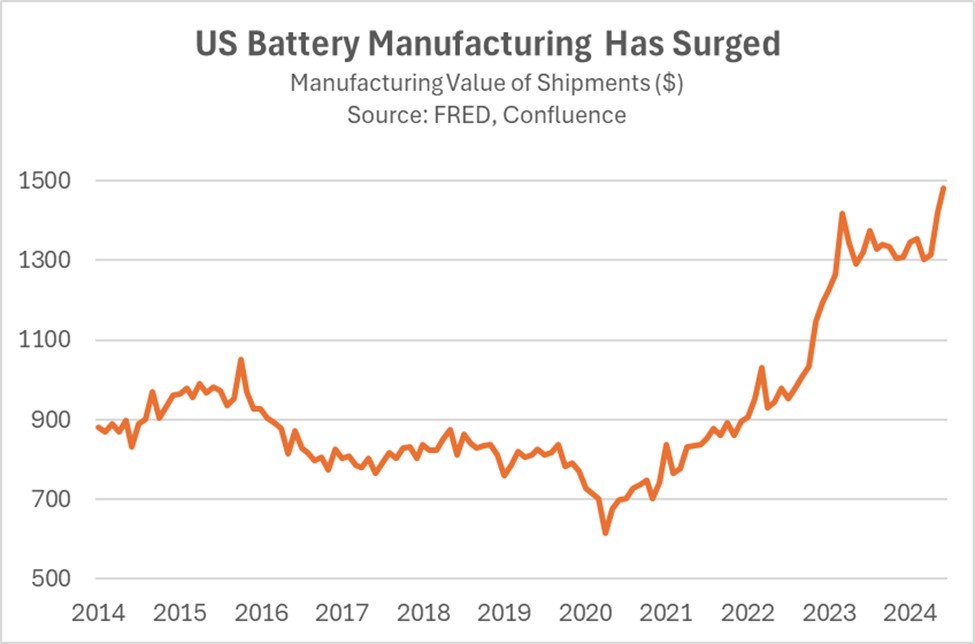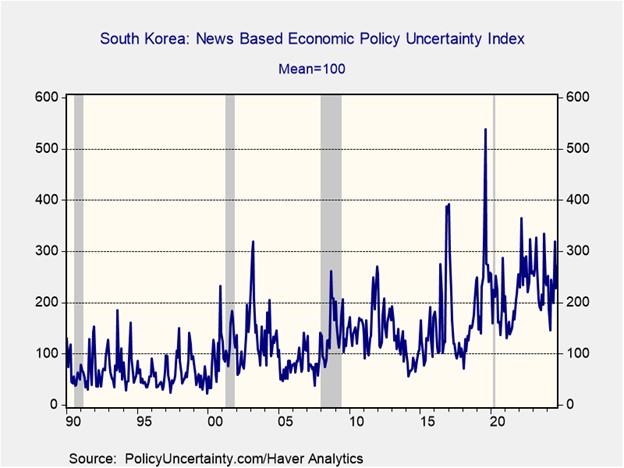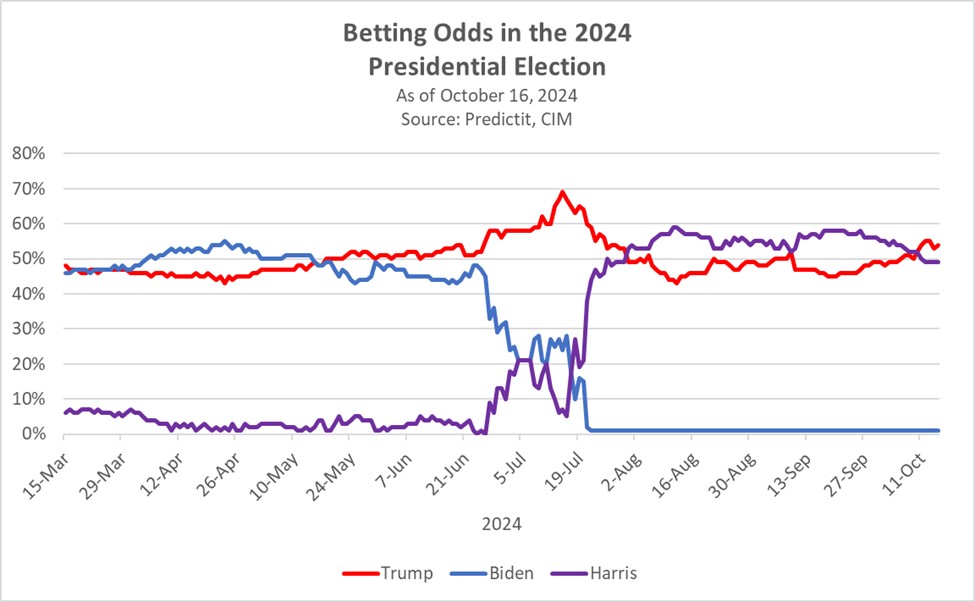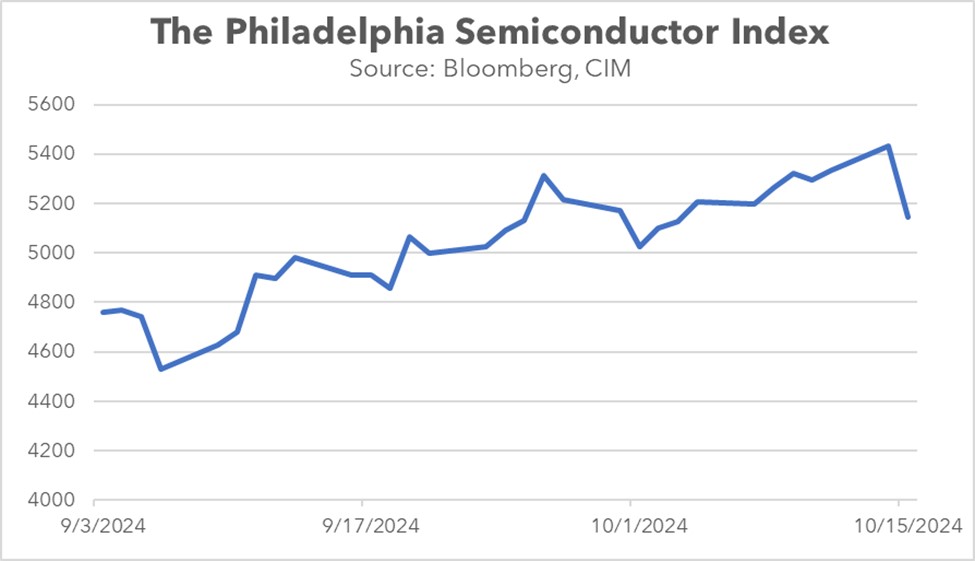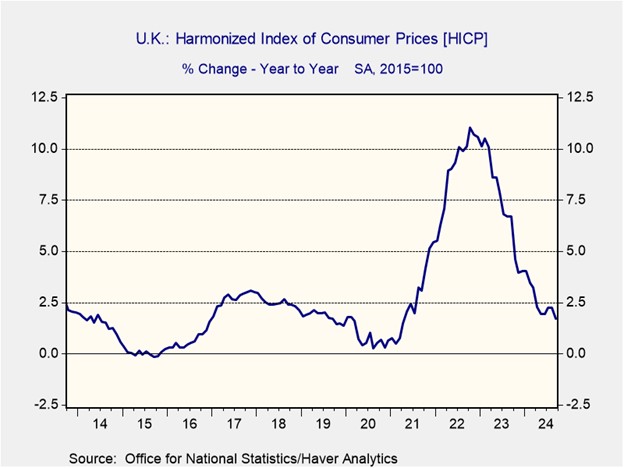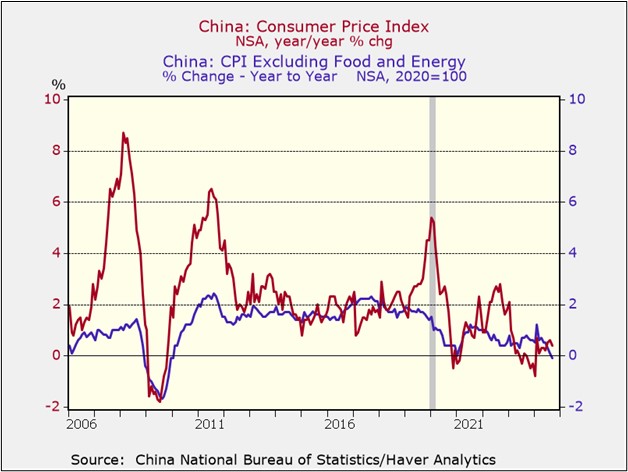Author: Amanda Ahne
Bi-Weekly Geopolitical Report – Israel’s Pager Caper and Supply Chain Security (October 21, 2024)
by Bill O’Grady and Patrick Fearon-Hernandez, CFA | PDF
Can you trust your refrigerator? What if it could be weaponized against you, perhaps by being booby-trapped to explode, release poisonous gas, or just stop working on the command of some foreign enemy communicating with its computer chip? Just as important, if everyday products connected to the internet or communication networks could become that dangerous, what would you want your government to do to protect you? What could your government do to protect you?
These questions may sound strange, but they demand attention after hundreds of Hezbollah militants in Lebanon were maimed by simultaneously exploding pagers and walkie-talkies on September 17 and 18. Dozens of militants died in the attacks, which have been attributed to Israel. In this report, we explore how this groundbreaking attack has probably transformed national security requirements and will likely lead to big, costly changes in global supply chains in the coming years. We will also delve into the underlying philosophies that help explain why this could impact globalization. As always, we wrap up with a discussion of the implications for investors.
Don’t miss our accompanying podcasts, available on our website and most podcast platforms: Apple | Spotify
Daily Comment (October 21, 2024)
by Patrick Fearon-Hernandez, CFA, and Thomas Wash
[Posted: 9:30 AM ET] | PDF
Our Comment today opens with a statement from a European monetary policymaker that suggests the European Central Bank could cut its benchmark short-term interest rates more slowly than investors expect, just as we think the Federal Reserve could cut US rates more slowly than anticipated. We next review several other international and US developments with the potential to affect the financial markets today, including a new competitive threat from Chinese electric vehicle makers and a tentative deal to end the Boeing strike in the US.
Eurozone: Slovenian central bank governor Boštjan Vasle, who is also on the European Central Bank’s policy committee, has warned that the ECB’s back-to-back interest rate cuts in September and October do not necessarily portend further cuts at each upcoming policy meeting. European swap markets suggest investors expect an aggressive pace of cuts, but Vasle said the policymakers will need to be convinced by the economic data. The statement suggests that the ECB will cut rates only slowly from here, just as the Fed might do with US rates.
France: Economy Minister Armond yesterday said state-investment bank Bpifrance will take a stake of about 1% in Sanofi’s consumer health business as part of its sale to a US private-equity firm. That will give the French government a seat on the health company’s board and ensure it has influence over the unit’s production, investment strategy, and employment policies. The move shows how the French government continues to prioritize maintaining control over what it considers strategic industries.
Moldova: In presidential elections yesterday, incumbent Maia Sandu came in first but failed to win an outright majority. She will therefore compete in a run-off on November 3, facing main rival Alexandr Stoianoglo, whose candidacy was backed by the pro-Russia Socialist party. Also in the elections, voters only barely approved a referendum supporting future accession to the European Union. The disappointing results for Sandu followed weeks of reports that Russian operatives were working to throw the elections into the Kremlin’s favor.
China: In a sign that China has expanded its lead in electric-vehicle technology, almost all major Chinese EV makers have now developed or are starting to develop extended-range EVs. The new Chinese EREVs can go more than 600 miles on a single charge and cost about 10% less than regular EVs. They not only accommodate a power cable to recharge the battery, but they also have a small internal-combustion engine to generate electricity for the battery when needed.
- The new Chinese EREVs may be an additional competitive threat to traditional and electric vehicle manufacturers around the world.
- Therefore, they are likely to further spur protectionist measures against Chinese EVs in the US and the rest of its geopolitical and economic bloc.
China-India: Ahead of the big BRICS summit opening tomorrow, China and India have reportedly reached a deal on military patrols along their disputed border in the Himalayan mountains. After deadly clashes along the “actual line of control” in 2020, tensions have been high in the area, raising the risk of a broader, more dangerous conflict between the countries. Although we haven’t yet seen any details on the deal, a solid agreement that cools tensions over the long term would therefore be a positive for global stability.
- We suspect the new deal was at least partly aimed at getting the BRICS summit off on the right foot. We also suspect Beijing might have made concessions to New Delhi to slow its growing ties to Washington, Tokyo, and Canberra.
- Separately, we note that the BRICS summit is due to discuss further de-dollarization efforts. So far today, the risk that the BRICS countries will further reduce their use of the greenback is giving a boost to gold prices. Near gold futures today have reached a new record high and are currently trading at about $2,752.40 per ounce.
- As a reminder, our Bi-Weekly Geopolitical Report from September 9 discussed prospects for the dollar as the world fractures into relatively separate geopolitical and economic blocs. The report shows how the dollar has kept appreciating against most other fiat currencies even as some countries have tried to reduce their use of it, in large part because of continued strong capital flows into the US.
United States-Russia: More than 50 members of the US Congress from both parties have written a letter to the Biden administration to protest SLB’s continued work in support of Russia’s oil industry. The letter to Secretary of State Blinken and Treasury Secretary Yellen demands the administration tighten its sanction rules so that US firms aren’t helping Russia earn oil revenues, which in turn can be used to finance its war against Ukraine.
- The move suggests SLB and other Western firms still operating in Russia could soon be forced to retreat from the market.
- Exemptions for oil service firms like SLB were initially put in place to avoid a collapse in Russian oil output. If Western oil service firms are forced to pull out of the country, there is some risk that Russian oil output could fall, pushing up global energy prices.
United States-Israel-Iran: Two classified US intelligence reports on Israeli preparations for a military strike against Iran have reportedly been leaked and posted on pro-Iranian internet platforms. Based on press reports, the two reports appear to be relatively raw, first-cut analyses of spy-satellite imagery collected by the National Geospatial-Intelligence Agency last week.
- The intelligence summaries do not appear to be comprehensive, well-vetted discussions of Israel’s attack plans. However, since they raise concerns about Israel’s operational security, they could potentially prompt Israel to delay its attack.
- Some commentators will likely decry the reports as new evidence that the US spies on its allies, but we don’t see that as a major story. More importantly, the reports may have been deliberately released by a lower-level employee in the US government or military who is disgruntled or seeking to undermine Israel. In that case, further embarrassing or damaging reports could be released in the coming days.
US Military: The Defense Department is reportedly developing a new program in which chief technology officers and other senior tech professionals in the private sector could take positions in the reserves. The initiative would be similar to existing programs in which medical and legal professionals serve as part-time military officers. The tech reserve officers would help the armed services with short-term projects in cybersecurity, data analytics, and other areas, illustrating how the modern military is built around information processing and other advanced technologies.
US Labor Market: Over the weekend, Boeing and the International Association of Machinists and Aerospace Workers reached a tentative deal for a new contract, potentially ending the union’s month-long strike against the company. Under the deal, workers represented by the union would receive a 35% pay hike spread over four years, an up-front bonus of $7,000, and increased company contributions to their retirement accounts.
- The workers are due to vote on the deal this Wednesday. If they vote to approve, Boeing could start producing its key airframes over the coming weeks and begin to stem the big financial losses it has incurred because of the strike.
- Settlement of the strike could also remove one important risk to US economic growth. Not only has Boeing shut down much of its production and announced layoffs, but key suppliers have started to do the same. If the new contract is approved, it could prevent any further production stoppages and layoffs in the key aerospace sector.
US Oil Services Industry: As it released a disappointing report on third-quarter revenue and profit growth last Friday, oilfield services giant SLB warned that energy firms are becoming more cautious about spending both in the US and abroad. According to CEO Olivier Le Peuch, the spending restraint reflects low global oil prices, which he in turn attributed to weak economic growth in China and elsewhere, surging rising oil production outside the Organization of the Petroleum Exporting Countries, and uncertainty about OPEC+ supply releases.
Daily Comment (October 18, 2024)
by Patrick Fearon-Hernandez, CFA, and Thomas Wash
[Posted: 9:30 AM ET] | PDF
The market is currently processing the recent GDP data from China. In sports news, the Cleveland Guardians stunned the New York Yankees with a 10th-inning home run to win Game 3 of the ALCS. Today’s Comment will discuss why consumer spending has remained resilient, the essential role of drones in modern warfare, and our thoughts on the European Central Bank’s latest rate decision. As usual, our report includes a roundup of domestic and international data releases.
The Strong US Consumer: Despite concerns over rising prices, households are still managing to increase their spending on everyday goods and services.
- Retail sales for September exceeded all expectations, surging from a 0.1% increase in August to a robust 0.4% the following month. Consumer spending has surged, particularly in the Retail Sales Control group, which excludes food services, autos, gasoline, and building materials. This category, which feeds into the GDP numbers, increased from 0.3% to 0.7%, marking the fastest growth in three months. This strong report boosted the Atlanta GDPNow forecast for the third quarter, projecting an annualized rate of 3.6%, a significant increase from the previous quarter’s rise of 3.0%.
- Despite the positive headline, the underlying data suggests growing consumer frugality. Households have shifted their spending towards everyday essentials while curtailing major purchases. Grocery stores, online retailers, and miscellaneous retailers like florists and pet stores were the biggest contributors to the strong retail sales figures. In contrast, big-ticket items, such as vehicles, have experienced muted sales, and home furnishing sales have declined for two consecutive months. Additionally, sales seem to be rising below their historical pace.
- The resilient labor market has enabled consumers to maintain spending despite rising inflation. As long as employment remains robust, consumer spending will likely continue to support the economy. The recent positive retail sales data reinforces the expectation that the Federal Reserve will either cut interest rates by 25 basis points at its next meeting or pause until economic indicators weaken. However, concerns about a potential resurgence of inflation may provide a floor in 10-year Treasury yields at 4% in the coming weeks.
The Rise of the Drone: The use of drones has become increasingly valuable in modern warfare as countries aim to reduce costs and yet remain effective in taking on larger rivals.
- The wars in Ukraine and Lebanon have demonstrated the crucial role of drones in modern warfare, particularly for smaller militaries. In its conflict with Russia, Ukraine has successfully developed a domestic drone industry that rivals imported models from the United States, bolstering its ability to strike Russian targets. Meanwhile, Hezbollah has employed drones to defend against Israeli attacks. These examples underscore the strategic importance of drone technology in contemporary combat.
- The drone revolution is a threat to global stability that shouldn’t be underestimated. Iran’s cheap, combat-proven drones are captivating developing nations, bolstering defenses, and aiding militaries like those in Ukraine and Sudan. The global production network of drones, spanning South America and Central Asia (including some US parts), raises questions about the effectiveness of sanctions. Meanwhile, Ukraine’s experience exposes limitations in US drone capabilities, prompting them, in some cases, to explore Chinese alternatives for reconnaissance. This highlights how any nation, regardless of size, can exploit niche strengths, reshaping the modern military landscape.
- The changing face of warfare favors smaller, stealthier equipment over traditional, heavy-duty hardware. This shift offers a strategic opportunity for the United States. By capitalizing on its advanced semiconductor industry, the US can not only improve drone performance but also develop counter-drone measures. This technological pivot could potentially reduce military expenditures, addressing budgetary concerns amidst a rising fiscal deficit. Moreover, these investments will likely stimulate growth in tech and defense companies with close ties to the government.
The Dovish Tilt: The European Central Bank (ECB) has reiterated its desire to ease policy as it looks to boost its flagging economy.
- On Thursday, the ECB lowered its benchmark policy rate by 25 basis points for the third time this year. Following the rate decision, the central bank observed that inflation was moving in the right direction, but it had growing concerns about the economy. This combination gave it the confidence to lower rates further. While there was no indication of future policy actions for December, it is speculated that they may reduce rates at the next meeting if inflation continues to decline and economic conditions deteriorate.
- Despite a general easing of eurozone inflation, several countries continue to face stubbornly high rates. In September, harmonized core inflation for the eurozone rose to 2.8%, significantly lower than the Netherlands and Belgium, where rates remain above 4% year-over-year. Greece’s rate was also notably higher. This discrepancy is primarily due to increased demand for services and the end of energy price control measures. As the price control information is phased out of the data, these countries could experience even more intense inflation in the coming months due to base effect changes.
- The ECB’s aggressive interest rate cuts are focused more on preventing a recession than a display of confidence that it has achieved its price stability objective. That said, while additional monetary easing is expected to continue into 2025, policymakers may slow the pace of cuts as signs of economic growth and rising inflation emerge. In the short to medium term, the ECB’s dovish stance could bolster the US dollar, especially as robust US economic data reinforces the Fed’s cautious approach to future rate cuts.
In Other News: Hamas leader Yahya Sinwar was killed on Thursday by Israel; his death has likely added pressure for an end to the conflict in Gaza. The US has eased restrictions on space technology exports as it looks to expand its foot print in the industry. China’s GDP growth increased 4.6% from the previous year, aligning with market expectations but marking its slowest rate of growth since Q1 2023.
Daily Comment (October 17, 2024)
by Patrick Fearon-Hernandez, CFA, and Thomas Wash
[Posted: 9:30 AM ET] | PDF
Good morning! The market is currently analyzing the latest retail sales data. In sports news, the New York Liberty secured a victory against the Minnesota Lynx in Game 3 of the WNBA Finals, taking a 2-1 lead in the series. Today’s Comment will discuss why small cap stock indexes are gaining attention, explore the strategic shift toward clean energy sources, and provide an overview of North Korea’s increasing assertiveness. As usual, the report will conclude with a roundup of international and domestic news releases.
The Rally Broadens: The market has changed its equity sector preference as it embraces the possibility of a soft landing.
- A broad-based rally over the past four months has pushed small cap indexes, such as the Russell 2000 and S&P SmallCap 600, close to all-time highs. Investors are increasingly willing to take risks, shifting their focus to smaller cap stocks that were often overlooked in the early half of the year. This shift in sentiment started when rising market expectations of a rate cut encouraged investors to move away from the tech sector in mid-July.
- The two best performing sectors over the past four months have been large cap utility companies and small cap communication firms. This shift comes as investors seek to maintain limited exposure to AI-related companies without incurring significant downside risk. Utility companies in the S&P 500 have gained appeal due to AI’s energy demands, their relatively high dividend yields, and their negative correlation with interest rates. Meanwhile, small cap communication companies within the S&P SmallCap 600 index have attracted investors seeking bargains.
- The overall broadening of the market should continue as long as investors remain confident in a soft landing. A continued decline in inflation, which would keep the Fed on track to lower rates, should be supportive of not only the sectors outlined above but also Real Estate and Financials, which had been shunned by investors during the Fed’s hiking cycle. However, any indication of a recession could lead investors to seek shelter in safer assets. At this time, we remain confident that if current conditions persist over the next few months, small cap stocks should perform relatively well.
Battery Superpower? As the US looks to build out its supply chain diversification, it is starting to focus on resources in its own backyard.
- A Silicon Valley startup, Lyten, has announced that it plans to invest over $1 billion in a lithium battery factory in Reno, Nevada. This area has become known as one of the key regions that will be used to build out the capacity of the US battery manufacturing industry. It is estimated that the state may be sitting on the largest deposit of lithium found anywhere in the world, at around 20 to 40 million metric tons.
- In recent years, the US has been ramping up its battery manufacturing capacity to diversify its energy resources. This effort is evident in the surge in the value of shipments from battery factories. A key component of this strategy involves securing critical mineral resources, which is why it has expanded investment lithium and cobalt production. Earlier this year, the US made its first major investment in Ottawa since WWII in order to gain access to its cobalt, while President Biden is scheduled to visit Angola in December to explore similar investment opportunities.
- While renewable technologies won’t supplant traditional fossil fuels as the primary energy source, their increased utilization will contribute to diversifying the US energy portfolio. This shift is essential as the US seeks to reduce its dependence on energy cartels like OPEC, whose member countries may be hostile to US interests. Consequently, the development of renewable resources will be a cornerstone of America’s energy strategy.
South Korea-North Korea: The two sides are feuding again as North Korea issues new threats to invade its southern neighbor.
- The new dispute arose after North Korea accused South Korean drones of flying into North Korean territory and dropping propaganda leaflets, which Pyongyang labeled as an act of war. In retaliation, North Korea destroyed parts of an unused bridge and railway connecting the two countries and warned that the escalating tensions had prompted 1.4 million people to sign up for military service. While the possibility of North Korea launching an imminent large-scale attack on its southern neighbor appears to be unlikely, the country does seem to be acting more hostile.
- Since the collapse of the nuclear agreement under the previous US administration, which would have lifted sanctions, North Korea has sought to strengthen its ties with some of America’s rivals, namely Russia and Iran. These relationships have likely contributed to the development of North Korea’s military capabilities, as the three countries have been known to exchange military expertise and weapons. Most recently, reports indicate that North Korea sent troops to assist Russia in its war against Ukraine, suggesting that its military is now gaining firsthand combat experience.
- Rising tensions on the Korean Peninsula have largely gone unnoticed as news coverage has focused primarily on the wars in Ukraine and Gaza. However, there are growing concerns that the possibility of conflict is at its highest level in recent memory. North Korea’s growing ties with hostile actors such as Iran and Russia suggest that the US will need to seek greater coordination with its allies within the Indo-Pacific to deter conflict. While we do not think a war is imminent, the risk is elevated.
In Other News: The Mexican peso (MXN) has dropped significantly as investors continue to factor in the possibility of a Trump victory in November. Chinese President Xi Jinping has urged officials to make every effort to ensure that the country meets its 5% annual growth target. Meanwhile, Meta has laid off employees who misused its $25 meal credit, indicating that the company may be preparing for a smaller workforce. The European Central Bank cut its rate by 25 bps, which is in line with expectations, as inflation continues to move downward.
Daily Comment (October 16, 2024)
by Patrick Fearon-Hernandez, CFA, and Thomas Wash
[Posted: 9:30 AM ET] | PDF
Good morning! Investors are eagerly awaiting more earnings reports to assess the underlying strength of the financial markets. In sports news, Argentine midfielder Lionel Messi scored a hat trick against Bolivia as he prepares for retirement. Today’s Comment will delve into our takeaways from the latest Trump interview with Bloomberg, our thoughts on how government restrictions can impact earnings for chip-related companies, and an explanation of why the Bank of England’s rate decision will affect the UK pound sterling. As usual, the report includes both domestic and international data releases.
Trump’s Agenda: Republican candidate and former President Donald Trump has conducted another interview outlining his plans if elected.
- In a one-hour interview, Trump championed his economic policies, touting their benefits for small businesses and workers. He stood firm in his belief that he should have a say in monetary policy and asserted that new tariffs would incentivize companies to reshore jobs lost to globalization. Additionally, he argued that his crackdown on illegal immigration would be counterbalanced by an influx of legal, documented workers. While the audience seemed to largely support his views, the interviewer raised concerns about potential negative economic consequences, as highlighted by economists.
- While theoretical criticisms hold weight, their real-world impact is contingent on various factors. For instance, a stronger dollar could mitigate many of the inflationary pressures from tariffs. Moreover, price elasticity, which measures consumer sensitivity to price changes, may compel foreign firms to absorb a portion of the increased costs. Also, although the Fed is independent, policy coordination with the executive branch is not unusual. Finally, while the crackdown on immigration could reduce the labor supply, it should also alleviate pressure on public resources.
- Betting markets currently favor President Trump to win in November, but polls indicate that the race remains close. Investors should instead focus on broader trends rather than individual candidates. Both Trump and Vice President Harris agree on reshoring manufacturing jobs. But while Trump supports tariffs to limit imports, Harris favors stimulus packages to boost domestic competitiveness. Still, assuming these efforts achieve their long-term objective of raising wages for US workers, we would expect higher inflation and higher interest rates on long-term bonds no matter the victor.
Chip Wars! Chipmakers have been impacted by increasing concerns about weak demand in China.
- ASML Holding, a leading chip equipment maker, had its worst day in 26 years after the company reported a significant decline in orders and lowered its 2025 guidance. While the specific reasons for this miss weren’t explicitly stated, increasing concerns are mounting that global chip restrictions on sales to China are negatively impacting the company’s earnings. Last month, the Netherlands mandated that ASML obtain export licenses to sell older machines and provide repair and maintenance services to China. This further highlights the challenges posed by these restrictions.
- The uncertainty surrounding ASML has sent shockwaves through the broader semiconductor industry, as other companies grapple with similar headwinds. The Philadelphia Semiconductor Index plummeted by 5.3% on the day, far outpacing the S&P 500’s modest decline of 0.8%. Investors are reevaluating the earnings potential of these firms, driven by growing concerns over their ability to sell to China, a critical market for chips and related products. ASML is particularly exposed to these restrictions, with 47% of its quarterly sales tied to the country.
- Chipmakers and related equipment manufacturers are likely to face headwinds as these regulations will complicate their efforts to expand into foreign markets. While China will be a strong focus, other countries may also be included. The Biden administration is currently considering implementing export controls for Nvidia and AMD chips on a case-by-case basis, targeting specific countries. While many of these firms are expected to adapt to the regulatory environment, their high valuations suggest that there may be better investment opportunities in other sectors.
Dovish BOE: The British currency has hit a near two-month low amid market expectations that the central bank will implement more aggressive monetary easing than previously anticipated.
- UK inflation fell below 2% for the first time in 3.5 years. In September, the Consumer Price Index (CPI) rose 1.7% from the previous month, much lower than the prior month’s increase of 2.2% and the consensus forecast of 1.9%. Meanwhile, core inflation moderated from an increase of 3.6% to 3.2%, and services inflation, a particular concern for policymakers, fell from 5.6% to 4.9%. However, not all the news was positive, as the core measure of services inflation (excluding volatile elements like airfares, packaged holidays, and education) indicated that underlying pressures persist.
- A lower-than-expected inflation report has paved the way for the Bank of England to potentially implement its second, and possibly third, interest rate cuts this year. While the central bank previously signaled a cautious approach to rate cuts following its initial cut in August, BOE Governor Andrew Bailey suggested earlier this month that the central bank could become more aggressive if inflation cooled more than anticipated. Nevertheless, the latest inflation reading has likely secured another 25-basis-point cut for November and increased the likelihood of another cut the following month.
- While the inflation report is encouraging, investors should closely monitor exchange rates, as rising import prices could offset some of the progress. The narrowing interest rate differential between the US and UK is likely to put downward pressure on the pound sterling (GBP), as the two central banks pursue divergent monetary policies. The Federal Reserve’s focus on the labor market means that a strong US jobs report in October could further weaken the case for another Fed rate cut. If this were to happen, the GBP could sink further relative to the dollar and push up the price of energy imports.
In Other News: The UK is considering imposing sanctions on Israel over its conduct in Gaza, indicating that other countries are seeking an end to the conflict. Ukrainian President Volodymyr Zelensky has shared his “Victory Plan” with EU officials as he seeks to reassure Western allies that he understands the war cannot continue indefinitely. Financial firms are starting off the earning’s season strong, with Morgan Stanley continuing the streak of Wall Street banks posting better-than-expected revenue.
Daily Comment (October 15, 2024)
by Patrick Fearon-Hernandez, CFA, and Thomas Wash
[Posted: 9:30 AM ET] | PDF
Our Comment today opens with news that Israel has agreed to strike only military targets in its expected attack on Iran, sparing oil and nuclear facilities. Global oil prices have therefore fallen sharply so far today. We next review several other international and US developments with the potential to affect the financial markets today, including heightened political tensions between India and Canada and a few words about the evolving military drone industry in the US.
Israel-Iran: According to a report in the Washington Post late yesterday, Israeli Prime Minister Netanyahu has told the US that his forces will only launch retaliatory strikes against Iranian military targets, rather than its oil or nuclear facilities. The report also said the Israeli attack would be calibrated to avoid the perception of political interference in the US elections.
- The suggestion that Tel Aviv is willing to exercise restraint after Iran’s latest missile attack has reduced the risk of a broader regional war that could cut global oil supplies.
- As a result, global oil prices so far this morning have fallen sharply. Near Brent futures are currently down 3.9% to $74.43 per barrel, while WTI futures are trading down 4.2% to $70.75 per barrel.
China-Taiwan: Despite the welcome sign of cooling tensions in the Middle East, the Chinese military yesterday conducted large-scale exercises around Taiwan to retaliate for Taiwanese President Lai’s speech last week asserting the island’s sovereignty. Amid the drills, the Chinese military issued a statement saying, “This is a stern warning to the secession forces advocating ‘Taiwan independence.’”
- Beijing’s reaction to Lai’s speech shows the extent to which Taiwan’s moves to assert its sovereignty could provoke a Chinese military response.
- Of course, a strong Chinese military response could ultimately draw the US into a conflict in the Western Pacific Ocean.
Russia-Germany: In another reminder of today’s continuing geopolitical tensions, the head of Germany’s domestic intelligence agency yesterday told parliament that increasingly aggressive Russian agents had tried to sabotage a domestic airline flight earlier this year. The agents apparently got a parcel rigged to start a fire into the cargo hold of an airliner, but it burst into flames too early and didn’t cause a crash.
- The statement shows how Russian intelligence tactics are increasingly approaching the level of state-sponsored terrorism.
- The risk is that a successful attack could spark an international security crisis that would be highly disruptive to the global economy and financial markets.
Poland-European Union: Over the weekend, Polish Prime Minister Donald Tusk said his government will suspend immigrants’ right to asylum, making Poland the latest EU country to unilaterally curb migration. According to Tusk, the suspension is needed because Russia and Belarus are conspiring to send waves of migrants across the border to destabilize his country. The move is also in sync with widespread popular resistance to migration among EU citizens, but it will likely set up a clash with EU officials in Brussels.
Italy: The government of right-wing populist Prime Minister Meloni is reportedly in talks with the country’s banks to temporarily raise their taxes. The potential tax hikes would help cut Italy’s budget deficit down to the 3% of gross domestic product required by the EU. Of the 9 billion EUR ($9.82 billion) in tax hikes or spending cuts needed to meet the EU’s requirements in 2025, about one-third is expected to come from the nation’s banks. However, the liberal Forza Italia party, which is a member of the coalition government, is resisting further taxes on companies.
Canada-India: Ottawa yesterday declared six top Indian diplomats personae non grata and expelled them over allegations they had collected intelligence on Canadian Sikhs and targeted them for violence. In response, the Indian government expelled six Canadian diplomats. The expulsions are the latest results of India’s assassination of a Canadian Sikh separatist in British Columbia last year.
US Monetary Policy: Fed board member Christopher Waller yesterday said the monetary policymakers should exercise caution in cutting interest rates after last week’s report that September consumer price inflation was higher than expected and an earlier report that labor demand in September was more robust than anticipated. The statement confirms our view that the Fed will now cut rates much more gradually than its 50-basis-point cut last month.
US Defense Industry: Since the Russia-Ukraine war has shown that small, inexpensive drones are now key military systems for reconnaissance and attack, new reports suggest the US Army will soon need to buy thousands of drones per year just for training purposes. As it tries to figure out how to best use drones in war, the Army is now testing small drones and drone-operating units in three different brigades.
- Experience to date suggests each of the Army’s 59 active-duty and National Guard brigades would need at least 50 small drones, and perhaps more than 100, for training. That implies a total fleet of 3,000 to 6,000 drones. Army officials assume about 25% of those drones would be lost each year, implying annual replacement buys of 750 to 1,500. Those totals don’t include the Army’s purchases of bigger, heavier drones or purchases by the Navy, Marines, and Air Force.
- Of course, the Russia-Ukraine war shows that the military would need to buy multiples of those figures to prepare for a potential war. It would also need to invest in the surge capacity to produce enormous numbers of drones of various types. For comparison, Ukrainian President Zelensky recently said his country’s defense industry has now developed the capacity to produce 4 million drones per year.
- We continue to believe worsening geopolitical tensions will spur increased defense budgets around the world. However, purchases of big, heavy, expensive systems such as fighter jets and tanks may be cut to fund purchases of relatively inexpensive drones. The defense budgets of the US and its allies may therefore be restructured over time.
- We still expect US spending on big, expensive, “exquisite” military systems will rise, but the growth rate will likely pale when compared with the spending hikes related to drones and other new technologies. The prime defense contractors that build the traditional systems, therefore, may not grow as fast as small defense start-ups or small companies producing high-tech products with dual civilian and military uses. As those firms eventually have their initial public offering of stock, they may be interesting investment opportunities.
US Nuclear Energy Industry: Late yesterday, Google said it has struck a deal to back the construction of seven small, modular nuclear reactors by nuclear energy start-up Kairos Power. Under the deal, Google has committed to buy some 500 megawatts of electricity from the reactors as they come on-line between 2030 and 2035. The deal is the latest example of firms signing up for nuclear energy to power their artificial-intelligence efforts without boosting their greenhouse gas emissions.
US Property Insurance Industry: Initial estimates show last week’s Hurricane Milton will lead to about $36 billion in private-sector insurance payouts, versus new estimates that Hurricane Helene will result in about $6 billion in payouts. The total estimated payouts for the two storms are significantly lower than initially feared. Reflecting the lower-than-feared payouts, major reinsurance stocks have now generally regained their prices from before the storms hit.
US Medicare Insurance Industry: The enrollment period for 2025 Medicare insurance plans opens today and will run through December 7. Because of changes by federal authorities and insurance companies, an estimated 1.5 million seniors will have their Medicare Advantage plan eliminated next year, while 3.5 million will lose their Plan D drug coverage. Many others are expected to see benefit reductions and/or deductible increases in their plans.
Daily Comment (October 14, 2024)
by Patrick Fearon-Hernandez, CFA, and Thomas Wash
[Posted: 9:30 AM ET] | PDF
Our Comment today opens with yet another disappointing press conference by a top Chinese economic official. We next review several other international and US developments with the potential to affect the financial markets today, including a cut in France’s debt rating outlook and another study looking at US economic prospects in a new term for former President Trump or under Vice President Harris.
Chinese Economic Policy: At a news conference on Saturday, Finance Minister Lan Fo’an said the central government will issue special bonds in 2025 to fund new fiscal support for local governments and banks, but he gave no figure for the new spending and provided no detail on how much of it would go to boost consumer spending. As with the National Development and Reform Commission’s disappointing news conference last week, the lack of detail miffed foreign investors. Local buyers were more positive, pushing China’s markets higher today.
- When the government announced its big monetary stimulus last month, sources said it would also soon release a plan to issue the equivalent of $284 billion in special bonds to help local governments and banks. However, no official announcement has been made. That has prompted rabid speculation about how aggressive the government will be. Some observers are looking (or hoping) for a program of up to $425 billion, with significant amounts going to boost consumption spending.
- For now, the Chinese economy continues to struggle against big structural problems, including weak consumer demand, excess capacity and high debt, poor demographics, decoupling by the West, and disincentives from the Communist Party’s intrusions into the free market. Without a strong dose of fiscal stimulus and new policies to promote consumer spending, Beijing may fail to generate lasting optimism among investors and consumers, with negative implications for global economic growth.
- In the latest piece of evidence showing China’s economic weakness, the September consumer price index was up just 0.4% from the same month one year earlier, decelerating from a 0.6% rise in the year to August. Excluding the volatile food and energy components, China’s “Core CPI” is already in deflation.
Chinese Financial Industry: The Supreme People’s Procuratorate said on Saturday that it has arrested Li Quan, former chief executive of the New China Life Insurance Company for embezzlement and bribery. Along with other recent arrests, the action against Li shows how Beijing has focused on cleaning up the country’s financial industry as part of its program to make China a “financial superpower.” Cleaning up the industry would probably be positive in the long run, but it also presents regulatory risk for Chinese financial firms in the near term.
Russia-Ukraine Conflict: The Russian military has increased its attacks in recent days on Ukraine’s Black Sea granaries, ports, and civilian ships serving them. The attacks appear to be an effort to undermine Ukraine’s ability to export grain and hurt its economy. If Russian forces can cut Ukrainian exports in a meaningful way, the shock to supply could lead to higher grain prices worldwide. So far this morning, however, US corn and wheat futures are trading slightly lower.
Broader Emerging Markets: Although major central banks have finally started cutting interest rates, S&P Global Ratings today issued a report warning that sovereign bond defaults will likely accelerate in the coming decade. The report argues that when today’s cutting cycle ends, interest rates will remain relatively high. Many emerging markets will also be left with higher debt and lower financial reserves, making them more susceptible to default.
France: On Friday, just a day after Prime Minister Barnier proposed an austere 2025 budget aimed at reining in the burgeoning fiscal deficit, Fitch cut France’s bond rating outlook to negative. Although the firm kept France’s overall sovereign rating unchanged at AA-, it warned that the rating could be reduced if the budget plan fails in the severely divided parliament. The move by Fitch follows an outright rating cut by S&P and an outlook cut by Moody’s earlier in the year.
- France’s public debt has now risen to more than 110% of gross domestic product, making it the third-most indebted country in the European Union after Greece and Italy. Clearly, emerging markets aren’t the only ones that can face debt problems!
- The country’s rapidly expanding debt reflects a range of factors, such as increased fuel subsidies, economic stimulus spending, rising interest rates, and tax cuts aimed at making the country more attractive for investment.
United Kingdom: At an investment conference in London today, Prime Minister Starmer promised to develop an industrial strategy, slash regulation, and get control of the country’s fiscal situation to spur economic growth. As Starmer put it to the assembled executives, “You have to grow your business, I have to grow my country . . . We are determined to improve it and repair Britain’s brand as an open, outward looking, confident, trading nation.” Still, corporate confidence may not improve much if Starmer’s government hikes taxes as expected.
Japan: With campaigning for the snap October 31 parliamentary elections due to start Tuesday, Prime Minister Ishiba said he is not contemplating raising or lowering the country’s 10% sales tax “for the time being.” The new prime minister and his cabinet have been criticized for making contradictory statements on economic policy, but Ishiba’s statement appears to be a clear sign that he is looking for stability in tax policy. That will likely be celebrated by investors, although it also suggests Japan will face continued budget deficits and growing debt.
United States-Israel-Iran: As the Israeli government continues planning for a strike against Iran to retaliate for its recent missile attack, the US Defense Department yesterday said it will deploy an advanced missile defense system to Israel, including about 100 troops to operate it. Deploying the Terminal High Altitude Area Defense system, or THAAD, along with its crew, will raise the risk of the US getting directly involved in the conflict, especially if Iranian missiles or drones injure any US troops.
US Politics: Scott Bessent, the former hedge fund manager for liberal philanthropist George Soros, who has become a top economic advisor to former President Trump, said in an interview with the Financial Times that Trump’s threats to weaken the dollar and impose big import tariffs on US allies are just bargaining positions. Bessent insisted that Trump would stand by the traditional US policy of keeping the dollar strong and maintaining its position as the world’s key reserve currency.
- While Bessent cautioned that he does not speak for Trump, he asserted that the former president, at the end of the day, is a “free trader.”
- Despite Bessent’s assertions, Trump has shown that he is highly populist, with a focus on protecting blue-collar workers even if it imposes costs on capital owners and business managers. Bessent’s comments may be aimed at shoring up support for Trump among business executives. Nevertheless, we suspect that if Trump is elected to a new term, he would indeed pursue populist policies, including high, protectionist import tariffs, a weaker dollar, and expansive fiscal spending for the working class.
- On that note, the latest study comparing economic prospects under Trump or Harris is out. In a Wall Street Journal survey of 50 economists, 68% predicted consumer price inflation would be higher under Trump than under Harris, while 12% thought inflation would be higher under Harris. Most of the respondents also expected higher interest rates and budget deficits under Trump, which is consistent with other recent studies.
- Of course, much will depend on what actually gets passed by Congress. In any case, the clear pattern in all these studies is that inflation, interest rates, and budget deficits are expected to be higher no matter who wins the presidency.
Nobel Prize: Finally, this year’s Nobel Prize in economics was awarded today to Turkey’s Daron Acemoglu, the UK’s Simon Johnson, and the US’s James Robinson for their analyses of why some countries are more prosperous than others. In their 2012 book “Why Nations Fail: The Origins of Power, Prosperity, and Poverty,” the authors stress that prosperity relies largely on having good institutions that protect private property, allow free markets to work efficiently, mediate disputes, and promote innovation. Nations fail if they lack such institutions.



